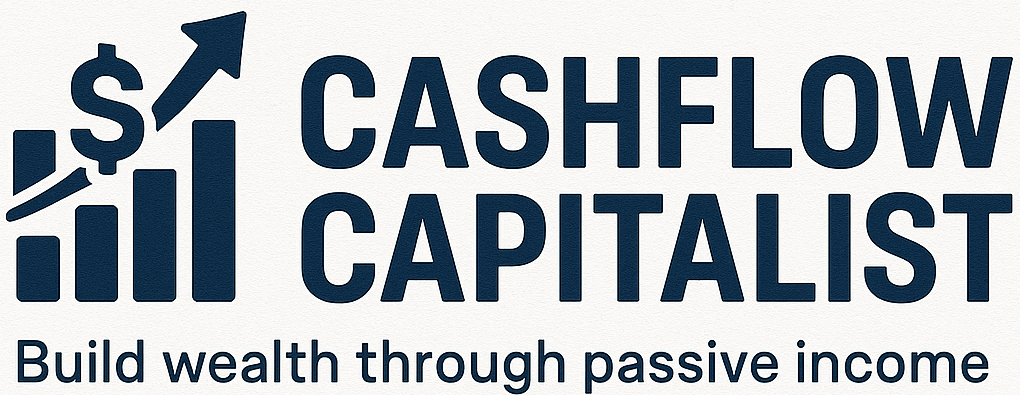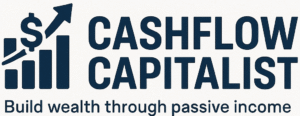The Difference Between Capital Gains and Dividends Explained: Which One Grows Your Wealth Faster?
Investments can grow your wealth in different ways, mainly through capital gains and dividends. Knowing the difference between these is key for Canadian investors. It helps them make the most of their investments.
Both can help your wealth grow, but they affect taxes differently. Dividend investing gives you regular income. On the other hand, capital gains investing aims for long-term growth. Finding the right mix of both can lead to the best results in your portfolio.

Key Takeaways
- Investments can generate returns through capital gains and dividends.
- Understanding the tax implications of each is key for Canadian investors.
- Dividend investing provides regular income, while capital gains investing focuses on long-term appreciation.
- Balancing these two investment returns is key to achieving the best results.
- Canadian taxation plays a significant role in investment returns.
The Two Paths to Investment Growth
Investment returns come from two main sources: capital gains and dividends. Capital gains are the increase in an investment’s value over time. Dividends are payments of a company’s profits to its shareholders. Knowing these paths is key for investors wanting to grow their wealth.
How Investments Generate Returns
Investments make money through capital appreciation and dividend income. Capital gains happen when you sell an investment for more than you bought it for. This gives you a profit. Dividends, on the other hand, are regular payments from companies to their shareholders. They offer a steady income.

The Wealth-Building Dilemma: Growth vs. Income
Choosing between investments that grow and those that give regular income is a big decision. You need to think about your financial goals, how much risk you can take, and how long you can wait for returns. Capital gains can lead to long-term growth, while dividends give a steady income.
For the best results, a smart investment plan might mix both capital gains and dividend income. This way, you can get the best of both worlds for long-term wealth building.
What Are Capital Gains?
Capital gains happen when you sell something for more than you paid for it. This is key to growing wealth through investments.
Definition and Basic Mechanics
Capital gains are profits from selling investments like stocks or real estate for more than you bought them for. In Canada, only half of the gain is taxed. For example, if you bought shares for $1,000 and sold them for $1,500, you made $500 profit. But only $250 is taxed.
Realized vs. Unrealized Capital Gains
It’s important to know the difference between realized and unrealized gains. Unrealized capital gains are increases in value that haven’t been sold yet. They’re not taxed yet. On the other hand, realized capital gains happen when you sell an investment and the gain is taxed. For instance, if shares go from $1,000 to $1,500 but aren’t sold, the gain is unrealized.

The Psychology of Capital Appreciation
The psychology of capital appreciation deals with how investors feel about their investments’ growth. They might feel excited or anxious. Experts say, “The key to benefiting from capital gains is not just in the financial mechanics but also in understanding the psychological dynamics at play.” This emotional side is important for making smart investment choices.
Grasping capital gains, including their types and the emotional side, is essential for growing wealth.
What Are Dividends?
Dividends are a way companies share profits with their shareholders. They are payments made from the company’s profits. This can give shareholders a steady income, making dividend stocks appealing to those seeking income.
Distribution of Profits
Companies choose to give dividends to share their profits. The board of directors decides this, looking at the company’s profits, cash flow, and future needs. For example, Enbridge, with its stable cash flow, often distributes a big part of its profits as dividends.
Types of Dividends in Canadian Markets
In Canada, there are different types of dividends:
- Cash dividends: Paid in cash to shareholders.
- Stock dividends: Given as more shares.
- Special dividends: One-time payments not part of regular dividends.
Dividend Yield and Payout Ratios Explained
The dividend yield shows the return on investment for a stock. It’s found by dividing the annual dividend by the stock’s price. The payout ratio shows what percent of earnings are paid as dividends. For instance, a 60% payout ratio means 60% of earnings are given as dividends. Investors look for a sustainable payout ratio to ensure the dividend can be kept up.

Dividend Reinvestment Plans (DRIPs)
Dividend Reinvestment Plans (DRIPs) let shareholders use their dividends to buy more shares. DRIPs help grow your investment without extra fees. Many Canadian companies have DRIPs, helping investors grow their shares over time. For more on top Canadian dividend stocks, check out this resource.
The Difference Between Capital Gains and Dividends
It’s important for investors to know the difference between capital gains and dividends. Both are ways to make money from investments. But they work in different ways, affecting how much risk you take on, when you get paid, and how your money grows over time.
Risk Profiles and Volatility
Capital gains are often riskier because they depend on the market. Dividends, on the other hand, are more steady. They give you a regular income, which is great for those who don’t like taking big risks.
Payout Timing and Cash Flow Considerations
Dividends give you money regularly, which is good for those who need steady cash. Capital gains, though, are only made when you sell your investment. This makes it harder to predict when you’ll get your money back.

Compounding Mechanisms
Both capital gains and dividends can grow over time. With dividend reinvestment plans (DRIPs), you can reinvest your dividends to make more money. Selling capital gains and reinvesting them can also lead to big growth in the long run.
Performance During Different Market Cycles
Capital gains and dividends perform differently in different market times. In good times, capital gains might do better. But in tough times, dividend stocks can help protect your money.
- Capital Gains: More volatile, tied to market performance, and potentially higher returns during bull markets.
- Dividends: More stable, regular income, and can provide a buffer during market downturns.
Knowing these differences helps you create an investment plan that fits your risk level, income needs, and goals.
Tax Treatment in Canada: Capital Gains vs. Dividends
In Canada, how you’re taxed on capital gains and dividends matters a lot. Knowing this can help you make better investment choices.
Capital Gains Taxation Explained
In Canada, you only pay tax on 50% of capital gains. Let’s say you sell something for a profit. You’ll only pay tax on half of that profit. For example, if you sell shares for $1,500 after buying them for $1,000, you only pay tax on $250 of the gain.
Dividend Taxation and the Dividend Tax Credit
Dividends from Canadian companies get a special tax break. This tax credit can lower how much you pay in taxes on dividends. It makes dividends taxed less than other income.
Strategic Account Placement
Placing your investments wisely can save you money on taxes. It’s all about where you put your money.
TFSA: Tax-Free Growth Considerations
Money in a Tax-Free Savings Account (TFSA) grows without being taxed. When you take it out, you don’t pay taxes on it. TFSAs are great for investments that make a lot of money or gains.
RRSP: Tax-Deferred Growth Strategies
Registered Retirement Savings Plans (RRSPs) delay when you pay taxes. You don’t pay taxes on the money in your RRSP until you take it out, usually in retirement.
Non-Registered Accounts: Tax Efficiency Planning
For non-registered accounts, think about the taxes on your investments. Choosing the right investments can help lower your taxes.

Understanding capital gains and dividends tax rules helps Canadian investors. By using different accounts smartly, you can keep more of your money. This way, you can reach your financial goals faster.
Canadian Market Examples: Comparing Growth Rates
The Canadian market offers a wide range of investment choices. Some companies focus on paying dividends, while others aim for growth through capital gains. This variety lets investors pick between stable dividend stocks and growth stocks, each with its own path to success.
Dividend Champions: Enbridge and Banking Sector
Enbridge is a key player in Canadian dividends, providing steady and attractive yields. Major Canadian banks also offer reliable dividends, making them a key part of income-focused portfolios. These companies show the stability and income that dividend investing can bring.
Capital Gains Leaders: Shopify and Tech Growth Stories
Companies like Shopify have led to big capital gains for investors. Shopify’s stock has grown a lot, showing the tech sector’s big return possibilities. Other Canadian tech companies have also seen impressive growth.
Historical Performance Comparison
It’s important to look at how these strategies have performed over time. The table below shows how $10,000 invested in Enbridge (a dividend champion) and Shopify (a capital gains leader) would have grown over five years.
| Company | Initial Investment | Value After 5 Years | Growth Rate |
|---|---|---|---|
| Enbridge | $10,000 | $14,500 | 45% |
| Shopify | $10,000 | $50,000 | 400% |
Which Strategy Would Have Grown $10,000 Faster?
Shopify would have made $10,000 grow much faster than Enbridge over five years. This shows the chance for bigger returns through capital gains. But, it’s important to remember the risks and volatility involved.
Conclusion: Tailoring Your Investment Approach
Canadian investors have to choose between capital gains and dividend income. It’s key to know the differences to make smart choices. These choices should match your financial goals and how much risk you’re willing to take.
Choosing the right strategy means thinking about taxes too. In Canada, taxes on capital gains and dividends are different. Knowing how to get the most from your investments is important.
When picking between dividends and capital gains, think about your goals, risk level, and taxes. This helps create a solid investment plan in Canada. It supports your long-term financial dreams.
A good investment plan helps Canadian investors succeed, whether through gains or dividends. Knowing the pros and cons of each helps build a strong portfolio. This portfolio grows and earns income over time.
FAQ
What is the main difference between capital gains and dividends?
Capital gains are the increase in value of an investment over time. Dividends are when a company shares its profit with its shareholders.
How are capital gains realized?
Capital gains happen when you sell an investment for more than you bought it for.
What is the difference between realized and unrealized capital gains?
Realized gains come from selling an investment. Unrealized gains are when an investment’s value goes up but hasn’t been sold yet.
How do companies decide to distribute dividends to shareholders?
Companies decide to give dividends based on their profits and cash flow. They also look at their dividend policy.
What is dividend yield, and how is it calculated?
Dividend yield is the annual dividend payment per share divided by the stock’s price. It’s shown as a percentage.
What are Dividend Reinvestment Plans (DRIPs), and how do they work?
DRIPs let investors use their dividend payments to buy more shares. This is often done without paying commission fees.
How do capital gains and dividends compare in terms of risk?
Capital gains are riskier because they depend on the market. Dividends are more stable and provide regular income.
How are capital gains and dividends taxed in Canada?
In Canada, capital gains are taxed at a lower rate than regular income. Dividends get a tax credit, which lowers the tax rate.
What is the dividend tax credit in Canada, and how does it work?
The dividend tax credit in Canada helps avoid double taxation. It reduces the tax on dividend income.
How can investors optimize their investment returns by choosing the right type of account?
Investors can use TFSAs for tax-free growth and RRSPs for tax-deferred growth. Choosing the right account can help maximize returns.
What are some examples of dividend champions in Canada?
Enbridge is a top dividend champion in Canada. It has a long history of stable and growing dividend payments.
What are some examples of stocks with high capital gains in Canada?
Shopify is a Canadian growth story. It has seen significant capital appreciation over the years.
How can investors compare the historical growth rates of dividend-focused and capital gains-focused investments?
Investors can compare investments by looking at total return, dividend yield, and capital appreciation. This helps see which investments have grown more.




